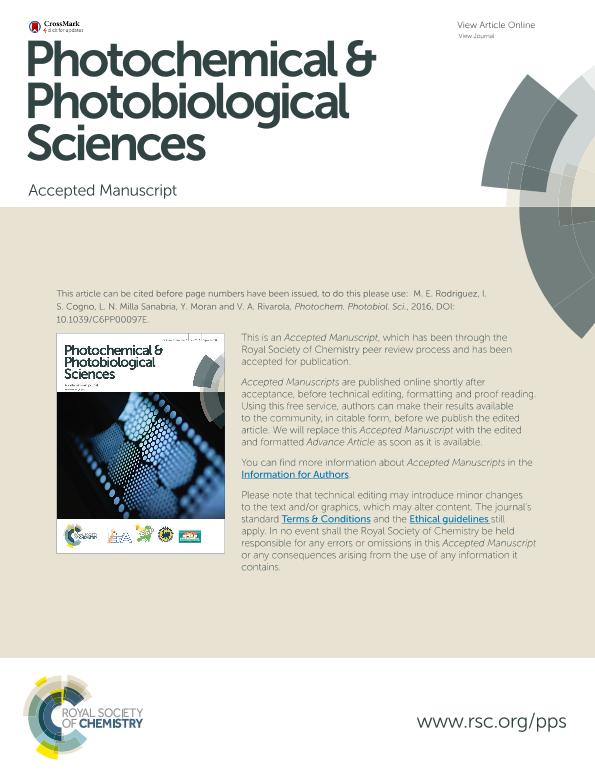Artículo
Heat shock proteins in the context of photodynamic therapy: Autophagy, apoptosis and immunogenic cell death
Rodriguez, Matias Exequiel ; Cogno, Ingrid Sol
; Cogno, Ingrid Sol ; Milla Sanabria, Laura Natalia
; Milla Sanabria, Laura Natalia ; Moran, Yanina Soledad; Rivarola, Viviana
; Moran, Yanina Soledad; Rivarola, Viviana
 ; Cogno, Ingrid Sol
; Cogno, Ingrid Sol ; Milla Sanabria, Laura Natalia
; Milla Sanabria, Laura Natalia ; Moran, Yanina Soledad; Rivarola, Viviana
; Moran, Yanina Soledad; Rivarola, Viviana
Fecha de publicación:
07/2016
Editorial:
Royal Society of Chemistry
Revista:
Photochemical and Photobiological Sciences
ISSN:
1474-905X
e-ISSN:
1474-9092
Idioma:
Inglés
Tipo de recurso:
Artículo publicado
Clasificación temática:
Resumen
Photodynamic therapy (PDT) is an anti-tumor treatment administered for the elimination of early-stage malignancies and the palliation of symptoms in patients with late-stage tumors, which involves the activation of a photosensitizer (PS) using light of a specific wavelength, which also generates singlet oxygen and other reactive oxygen species (ROS) that cause tumor cell death. Several mechanisms are involved in the protective responses to PDT including the expression of chaperone/heat shock proteins (HSPs). The HSPs are a family of proteins that are induced by cells in response to exposure to stressful conditions. In the last few decades, it has been discovered that HSPs can play an important role in cell survival, due to the fact that they are responsible for many cytoprotective mechanisms. These proteins have different functions depending on their intracellular or extracellular location. In general, intracellular HSPs have been related to an anti-apoptotic function and recently, HSP-induced autophagy has shown to have a protective role in these chaperones. In contrast, extracellular HSPs or membrane-bound HSPs mediate immunological functions. In the present article, we attempt to review the current knowledge concerning the role of HSPs in the outcome of PDT in relation to autophagy and apoptosis mediated-resistance to photodynamic treatment. We will also discuss how certain PDT protocols optimally stimulate the immune system through HSPs.
Palabras clave:
Heat Shock Protein
,
Apoptosis
,
Autophagy
,
Photodynamic Therapy
Archivos asociados
Licencia
Identificadores
Colecciones
Articulos(CCT - CORDOBA)
Articulos de CTRO.CIENTIFICO TECNOL.CONICET - CORDOBA
Articulos de CTRO.CIENTIFICO TECNOL.CONICET - CORDOBA
Citación
Rodriguez, Matias Exequiel; Cogno, Ingrid Sol; Milla Sanabria, Laura Natalia; Moran, Yanina Soledad; Rivarola, Viviana; Heat shock proteins in the context of photodynamic therapy: Autophagy, apoptosis and immunogenic cell death; Royal Society of Chemistry; Photochemical and Photobiological Sciences; 15; 9; 7-2016; 1090-1102
Compartir
Altmétricas



